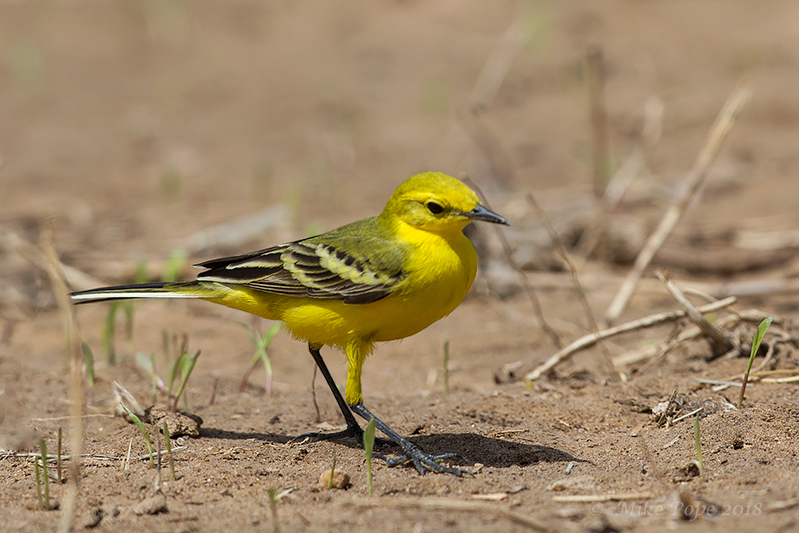I returned earlier this week from taking part in Champions of the Flyway (COTF18) with Team Rockjumper (Adam Riley, George Armistead and Toumas Seimola and myself) to both compete and raise money for Birdlife Croatia and Birdlife Serbia in their plight to protect migratory birds along key flyways in their respective countries. We can proudly say that the 32 competing teams raised in excess of $100,000 and set a new COTF milestone. Team Rockjumper raised 150% of our conservation target and recorded 161 species in the 24-hour period of the race and had a really great time in doing so.
As migration was in full swing during COTF it was obvious that I would be out over the weekend and since the preceding weekend at Abraq was so good, that is where I headed today and again some great birds were to be had.
Before I reached the gate to the farm just as the sun was coming up, I saw some migrants where the water tankers fill their tanks for the farm. In particular a Red-throated Pipit which was not here two weeks ago was feeding in and around the trucks. I must say the drivers looked at me strangely when I got out my car and lay flat on the ground. Later one of them came to see what I was doing and since we didn't speak the same language I just showed him the back of my camera - he smiled and gave me the thumbs up
 |
| Red-throated Pipit (Anthus cervinus) |
Once inside, I had a slow drive around to get a sense of what was here, a distant roosting European Turtle Dove was a great start as these birds are certainly becoming fewer each year as they are persecuted on every leg of their migration journey
 |
| European Turtle Dove (Streptopelia turtur) |
Some European Bee-eaters had also roosted overnight
 |
| European Bee-eater (Merops apiaster) |
A Masked Shrike was fleetingly seen before it disappeared into cover
 |
| Masked Shrike (Lanius nubicus) |
In the open desert area, Isabelline Wheatear's were numerous
 |
| Isabelline Wheatear (Oenanthe isabellina) |
Two nomadic Pale Rockfinch dropped in briefly to feed on wild seeds before disappearing again
 |
| Pale Rockfinch (Carpospiza brachydactyla) |
At the fields where crops were being watered, there was a lot more action with a few races of Yellow Wagtail foraging amongst the crops - Sykes’s Wagtail
 |
| Sykes's Wagtail (Motacilla f. beema) |
Yellow-headed Wagtail
 |
| Yellow-headed Wagtail (Motacilla f. lutea) |
and this unknown race which may be a beema variant - if you any idea's, let me know.
 |
| Yellow Wagtail - race? |
A few more Red-throated Pipits
 |
| Red-throated Pipit (Anthus cervinus) |
However, the highlight for today was a single Eurasian Siskin feeding feverishly on the seeds from some flowers - pulling them out from the base of the 'pod'
 |
| Eurasian Siskin (Carduelis spinus) |
In the same area, a female Siberian Stonechat was hawking from the tops of the same flowers
 |
| Female Siberian Stonechat (Saxicola m. hemprichii) |
Along the road quite a few Rufous-tailed Scrub Robins were quite active
 |
| Rufous-tailed Scrub Robin (Cercotrichas galactotes) |
As with the last visit, there were still good numbers of Pied Wheatear present with a bit of variation between some of the male birds
 |
| Male Pied Wheatear (Oenanthe pleschanka) - no rufous |
 |
| Male Pied Wheatear (Oenanthe pleschanka) - with rufous chest |
 |
| female Pied Wheatear (Oenanthe pleschanka) |
There were fewer Northern Wheatear's
 |
| Male Northern Wheatear (Oenanthe oenanthe) |
and Eastern Black-eared Wheatear's
 |
| Eastern Black-eared Wheatear (Oenanthe h. melanoleuca) with dark throat |
Spotted Flycatchers now put in an appearance
 |
| Spotted Flycatcher (Muscicapa striata) |
A Mauryan Grey Shrike was seen on the boundary fence
 |
| Mauryan Grey Shrike (Lanius lahtora pallidirostris) |
Whilst a stunning Western Blue Rock Thrush was at the now empty pond at the entrance to the farm
 |
| Western Blue Rock Thrush (Monticola solitarius) |
At this time of year, you also have to keep an eye out on the skies above - hirundines were represented by Common House Martin
 |
| Common House Martin (Delichon urbicum) |
and Sand Martin
 |
| Sand Martin (Riparia riparia) |
Whilst there were also fly by's of Western Marsh
 |
| Male Western Marsh Harrier (Circus aeruginosus) |
and Montagu's Harrier
 |
| Male Montagu's Harrier (Circus pygargus) |
A little later when thermals strengthened a single Eastern Imperial Eagle came soaring by majestically overhead..
 |
| Eastern Imperial Eagle (Aquila heliaca) |
However, the best part of the whole day was the almost complete lack of shooters around the farm - not sure why, but I appreciated it immensely!







No comments:
Post a Comment